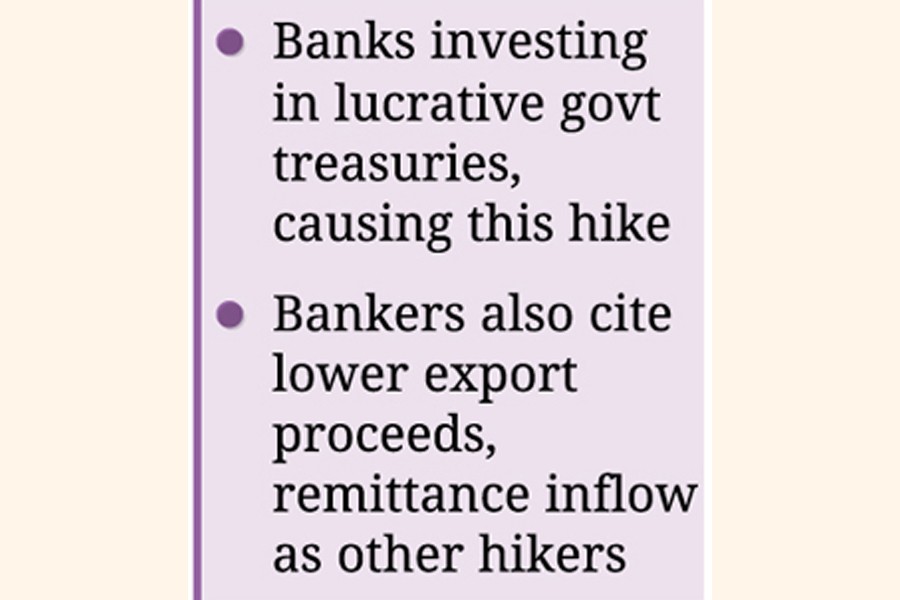
Call money rate hits 11-year high at 9.14pc
FE REPORT | Friday, 22 December 2023

Interbank borrowing gets much costlier now as the call-money rate hit an eleven-year high at 9.14 per cent Thursday amid overall liquidity stress in Bangladesh's banking system.
The sharp rise in the call-money rate, at which short-term funds are borrowed and lent on the money market, indicates higher cost of exigent funds for some banks, notwithstanding prevalence of some liquidity surplus in the overall system.
Banks lend overnight money to one another to fill the asset-liability mismatch or to meet sudden demand for funds.
The interest rate charged on overnight loan by one bank to another stood at 9.14 per cent on the day which is believed to be the highest in 11 years since 2013.
The duration of the call-money credit is one day. Banks resort to these types of borrowing to fill asset-liability mismatch, comply with the statutory CRR and SLR requirements and to meet sudden demand for funds.
Bangladesh Bank data show banks borrowed Tk28.9 billion on December 21 from the call-money market on the day.
There were 70 bids on the day. Many banks took it at 9.5 per cent while some at 7.75 per cent, averaging at 9.14 per cent.
People familiar with the matter in the industry told the FE that the main reason behind the shortage of funds is that many banks have invested in higher-yielding government securities.
Besides, banks have to adjust their many ratios (for example, advance-deposit ratio) in December which requires funds or deposits.
"The number-one reason is liquidity crunch on the market," said Syed Mahbubur Rahman, managing director and CEO of a private commercial bank, Mutual Trust Bank PLC.
"Many banks having adequate liquidity have invested in government treasury which is risk-free and the yield is much higher than in previous periods."
Managing director and CEO of another private bank, Dhaka Bank, Emranul Huq told the FE that the export proceeds are now much lower which is another reason behind the liquidity shortage on the market.
And remittance inflow also remained lower than expected, which acted as another hiker of call-money rate.
The banker, however, hopes that the liquidity state may stabilise during the upcoming January-February period of next year.
The rate rose to 7.23 per cent in October a day after the central bank's key policy rate was hiked and went up to 8.53 per cent in the early weeks of December.
High-priced dollar purchases by banks also cut down their assets in local currency.
Such higher call-money rate weighs on the profitability of banks as it mainly helps raise the interest on deposits.
However, 5-day short interbank borrowing rate averaged Thursday at 10.36 per cent, while 6-day borrowing claimed yet higher at 11 per cent.